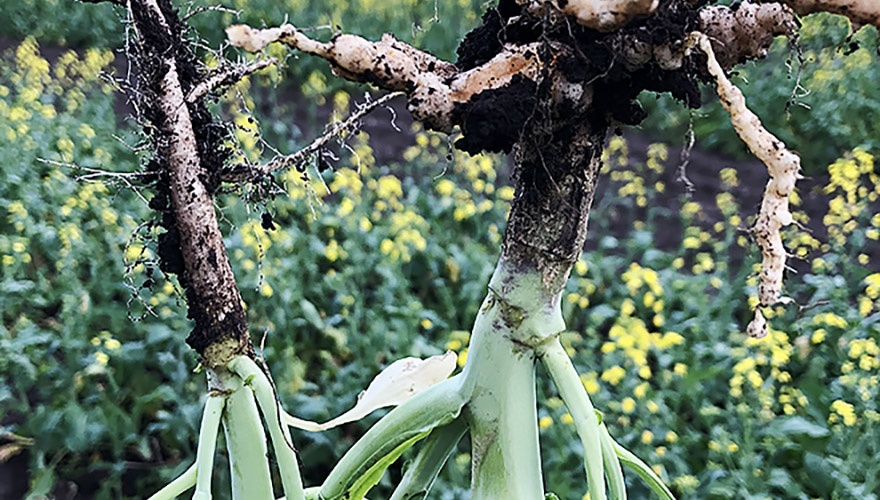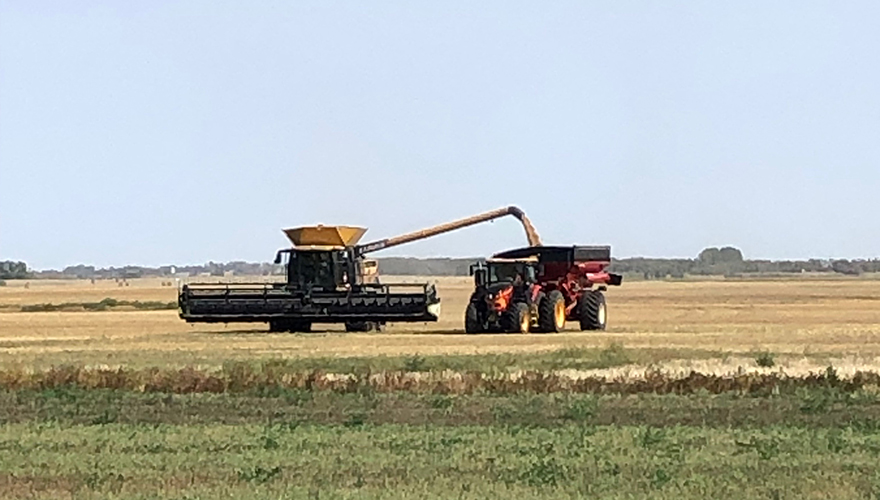Posted December 05, 2019
Why Monitoring Grain Bins Is Critical Storage Success
We all know how difficult this year’s harvest was for western Canadian farmers. A very wet fall and early snow meant grain crops were put in the bin late and in some cases, weren’t harvested at all.
After a challenging harvest season, it’s natural for farmers to breathe a sigh of relief once it’s done. Even those who had to abandon some fields may have felt a bit relieved because they no longer had to be worry about getting the crop off.
In situations like this, some farmers may even think they can relax a bit once the crop is in storage and not be concerned about monitoring their bins right away. That, however, can be a big mistake — particularly following a harvest like the one we just had when so much grain was put in the bin tough.
All the precipitation and a lack of drying days, combined with the delayed harvest, likely meant many farmers ended up taking their crop off at higher moisture levels than they would have liked, which increases the risk of spoilage. When that happens, the job of monitoring your bins to ensure the grain is drying and conditioning properly is even more important.
Even the toughest grain can be cooled, dried and brought down to optimal temperature and moisture levels though corrective measures such as the use of aeration fans. But to maintain the best conditions over the winter, grain bins need to be regularly monitored throughout the storage season.
Ambient air temperature and relative humidity are of course important, but it’s also crucial to keep close tabs on temperature and moisture levels within the grain itself.
It used to be common practice for farmers to use pieces of rebar or copper pipe to check for condensation and hot spots in their stored grain. Nowadays, many depend on devices like sensor cables installed in bins which makes monitoring more accurate and reliable. It’s also easier, thanks to wireless technology that enables farmers to monitor and adjust environmental conditions within their bins from virtually anywhere.
The key, however, is to always keep on top of what’s going on in your grain storage. Even the best monitoring system can fail, if you’re not conditioned to use it properly and regularly.
There are a number of different monitoring systems to choose from. Both OPI and IntraGrain Technologies offer sensor cable products for temperature and moisture level monitoring, and another Western Canadian company, GrainViz, sells a higher-end system that uses medical imagining technology to produce 3-D images of what’s happening in the stored grain.
Considering the high cost to farmers if they lose their crop to spoilage, I think getting a bin monitoring system is a worthwhile investment, especially considering how much the technology has come down in price in recent years.
For instance, a farmer who decides to install a $350 sensor cable system in a 5,000-bushel grain bin is only paying a few pennies per bushel. The way I look at it, that’s a small price to pay for the added peace of mind it can provide.
By Darcy Eskra, Regional Account Manager for Equipment with Nutrien Ag Solutions in Killam, AB. Originally posted in the Alberta Seed Guide, December 1, 2019.
FEATURED LINKS
NEWSLETTER
Want to stay caught up in all things agriculture? Sign up for the newsletter and get all the latest news straight to your inbox.
Understanding Canola Harvest Management Options
Posted December 11, 2019





